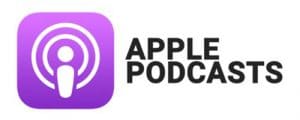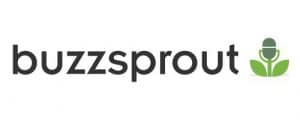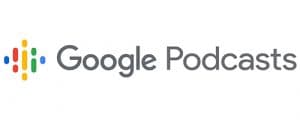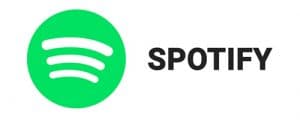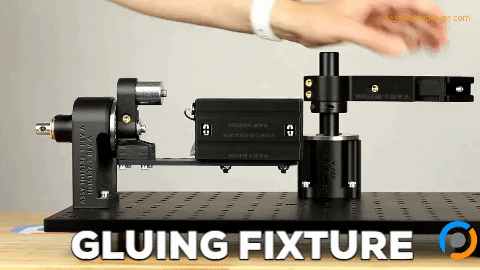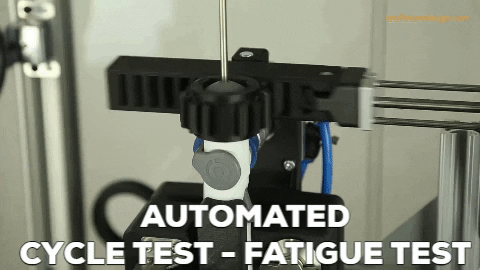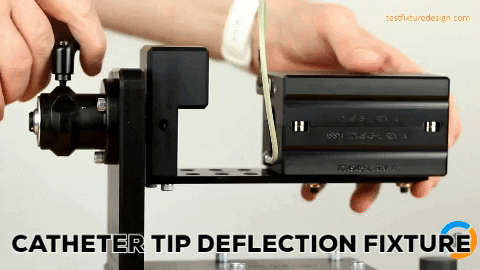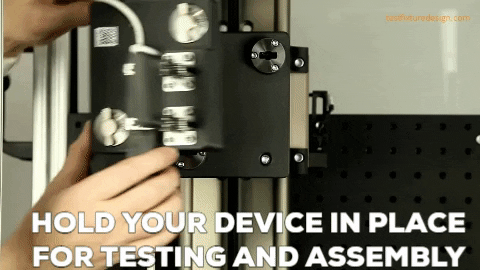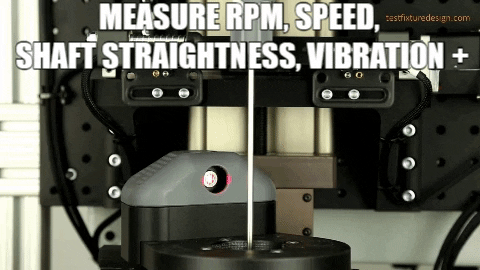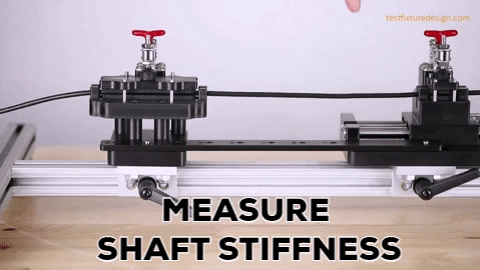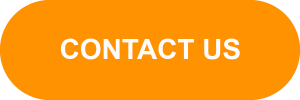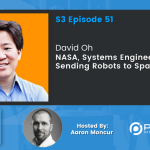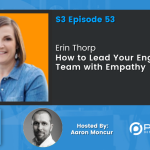Erin McDermott | Resiliency, Freelancing, & Optical Engineering
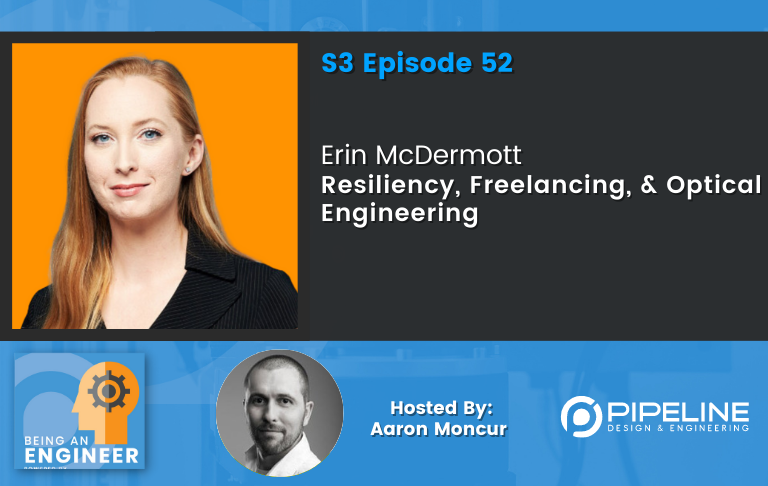
Who is Erin McDermott?
After years of, in her words, corporate engineer drudgery, Erin McDermott abruptly quit her job and jumped headfirst into finding a way to make it on her own. Seven years later, she has built an optical engineering consultancy, and grown a network of talented, independent hardware engineers, many of whom she coached to help them find the tools and mindset needed to survive on their own.
Visit Erin’s website: http://www.spirestarter.com/
EXPAND TO VIEW EPISODE TRANSCRIPTION
SUMMARY KEYWORDS
optical, engineer, optics, people, aaron, problem, engineering, light, build, tools, big, imaging, freelancer, software, company, pay, design, money, work, find
SPEAKERS
Presenter, Erin McDermott, Aaron Moncur
Presenter 00:00
Hi everyone, we’ve set up this being an engineer podcast as an industry knowledge repository, if you will, we hope it’ll be a tool where engineers can learn about and connect with other companies, technologies, people, resources and opportunities. So make some connections and enjoy the show.
Erin McDermott 00:18
So one of your biggest hurdles when you become a freelancer is to build your name, build your reputation, build your brand, and writing and having these things published was a big help for all that.
Aaron Moncur 00:44
Hello, and welcome to the being an engineer Podcast. Today we’re speaking with Erin McDermott who, after years of in her words, corporate engineer drudgery abruptly quit her job and jumped headfirst into finding a way to make it on her own. Seven years later, Erin has built an optical engineering consultancy and grown a network of talented independent hardware engineers, many of whom she coached to help find the tools and mindset needed to survive on their own. Erin, welcome to the podcast.
Erin McDermott 01:16
Thank you for having me, Aaron. I’ll be other Aaron.
Aaron Moncur 01:20
Yeah, we were just talking before we started the show that we have a couple of errands here at pipeline as well. And we just hired some people. I have to share this because it’s funny. And so now we have a Larry I carry a Gary and a terry pipeline. We have a Shawn and a John. And we have two more or two mics and two Aarons and two Jason’s So apparently, if you want to work in pipeline, your name either has to rhyme with someone who already is here or be the same as was already here. Ridiculous. And so speaking of the Erin and Aaron, I mean me Aaron and Erin McDermott, Erin, I grew up in Hawaii. And there’s like a very specific way to say my name Aaron with the two A’s versus the generally the girl named Erin with an E. And that has been lost here. As I’ve moved away from Hawaii, the accents are not quite the same, but people would call me Erin growing up. And then the E R I N was Aaron. So just a subtle difference, but one that I took great pride in growing up.
Erin McDermott 02:33
That’s the first I’ve heard that so maybe who is weird? I don’t know. I don’t think you’re
Aaron Moncur 02:36
what is definitely weird. Weird in a good way. Yeah. Okay, well, Erin, what made you Erin, not Aaron. Aaron, what made you decide to become an engineer?
Erin McDermott 02:49
I needed the money, Aaron.
Aaron Moncur 02:52
And that’s, that’s a good answer.
Erin McDermott 02:56
So my family was pretty poor growing up with my parents were disabled. And we were always told me my brother’s kids that you know, Dad’s gonna die early. So it’s gonna be rough pretty soon. So my whole thought process in high school was always like, I have to find a way not just to make money to support me as a teenager, but to support a whole family as a teenager. And how do I do that? So first, I was actually going to be an artist, because my thought process was, I need to do what I am best at. And that way I will succeed. And I’m like, Well, I’m, I guess I’m better at art than most other people here, I could go into commercial art. And then I got a really bad grade on something. And I dropped the class immediately. I’m like, I’m not gonna pay someone for four years to tell me stupid things about art, art. And at the same time, I was taking physics, and I really, really liked the physics. So I picked up precalc where I used to have the art class, and then, you know, I want to go into theoretical physics, but that doesn’t pay the bills. Aaron,
Aaron Moncur 04:00
this was this all in high school still? Yeah. Wow, what a like a load to carry in high school.
Erin McDermott 04:09
But, you know, loads shape us, I guess. So that is probably why I am, where I am today, whether that’s good or bad?
Aaron Moncur 04:20
Absolutely, absolutely. You know, I was talking with a close friend of mine a few weeks ago. And he’s a little bit older than me. But he’s been very successful in life. And I asked him, things just seemed to go well for him in life. He just succeeds everywhere he goes, and I said, What do you attribute that to? And he said, Well, I was kind of on my own from a pretty young age starting at, you know, 17 or so financially speaking, I was on my own, I had to figure all this stuff out. So I think that you’re 100% right, that that really does shape you and, you know, build some extremely valuable skills.
Erin McDermott 04:57
Yeah, it doesn’t feel good at the time, but you know, looking back Back, those things are always what you attribute some of your successes to. Yeah. So to get through school, though, I, I didn’t have enough money to pay for college on my own. So I had to wait a whole year, like delivering Chinese food. And I was working 80 hours a week and scooping custard for a whole year just to save up enough money to get to the first quarter of college. And that was Kettering University, which is used to be General Motors Institute. And I chose that school because in Michigan, it was the only program actually in the world, that might still be where you could do Co Op, where you’re actually earning, like real money from your freshman year, real, was 12 months out of the year, you’re at school or work. So you do six months of work six months of school from your freshman year. And I’m like, that’s the only way that I’m gonna be able to afford this.
Aaron Moncur 05:52
So it’s incredible that they have that program. How wonderful.
Erin McDermott 05:55
Yeah, and that the classmates really spoiled me that I went to school with because, you know, there are people who are really motivated on their own to do stuff like you don’t go there for fun. This is not a party school, it was a dry campus, you know. So then, you know, going into the working world afterwards, with people who didn’t come from that really rigorous background was really interesting to see the difference in mentalities and work ethic and stuff between
Aaron Moncur 06:25
these two. I bet, I bet you probably felt like half the people were slowing you down after that. All right, so So you paid for school as you were going to school? Was it difficult to get into that program? Was there a lot of competition? Because I mean, to me, that seems like a really great deal. You have to work a lot. But hey, you pay for school as you’re going that’s, that’s great.
Erin McDermott 06:55
Well, at that time, it was 2000 Just when I graduated high school. So the working world was really hard for engineers. It’s not like it was today. And I knew a lot of people who went to that university, they had to drop out because they couldn’t find a co op job. There was no one hiring. That was one of the biggest hesitations for a lot of people at that time. That is not the case. Today. They are you know, companies are fighting for these students. I went back a couple years ago, I said, Is there anything I can do to help these poor students out? They can’t find coops they’re like, We have no problem. That’s
Aaron Moncur 07:25
not a problem. And what kind of work did you do? I mean, as a freshman, you don’t have much engineering experience yet. So what what did you do?
Erin McDermott 07:36
It took me a while to get the co op job. I think I was maybe a sophomore by that point, or maybe a junior, maybe a sophomore. But one of my professors was talking to federal mogul, which was on campus one day, and he actually got me the job because, you know, I studied applied physics, that was my core discipline. And the person he was talking to from federal mogul, which is not a motor manufacturer, if you’re not familiar. That guy also was a physics doctor. And he’s like, Oh, well, I love physics students. And one of the problems, you know, that I was having was, what am I going to do with an applied physics student, and I’m like, anything. That’s just you got electrical engineering, chemical engineering, whatever. So I was, I was also doing an Applied Optics concentration. So there are three different concentrations. You could choose from optics, acoustics, material science, I chose optics, because I’m from Rochester, New York, which is the home of optical science. And there’s a whole bunch of, or there was a lot of optics industry there. And I want to go back home and help my family eventually, that was the plan. So this job that they had was for laser process development, so not product development, where you’re making new products, but using technology on the manufacturing line, kind of similar, I guess, to what you do. To make products more heat resistant, were resistant stronger by adding new processes just here and there in the in the assembly line. So that was really cool to enter product development from a process development perspective. And I did that for two and a half years, mostly with high powered lasers, but also high powered microwaves and stuff.
Aaron Moncur 09:21
That sounds like a lot of fun. Yeah. Well, eventually you decided to leave the corporate world and go out on your own as a freelancer. What, what motivated you to make that decision?
Erin McDermott 09:36
A lot of pain.
Aaron Moncur 09:39
From the lasers, he got burned too many times. Cut off a few fingers.
Erin McDermott 09:44
There were some flames there. Well, I had several jobs after that Co Op I didn’t end up working there after I worked in industrial sensor development at loads electronic and then I went to Valeo Sylvania, which was awesome and failure to do automotive headlamps and taillights and stuff like that design. And then I went to commercial lighting. But while I was at Valeo back in 2011, I wasn’t able to pay the bills. So I had, I still had all this debt, even though I had huge scholarships, which I negotiated with the university because like, you know, I’m, I’m a girl. And just by having me there, we’re gonna change the ratio of
Aaron Moncur 10:30
good points. Yeah. So
Erin McDermott 10:34
I still graduated with a lot of debt. And I was also affected by the recession, I got laid off in 2008, and took me over two years to find another job. So I was deeply deeply in debt. And when I finally got hired again, they knew that I was desperate. So I got paid peanuts, and I was really, really struggling financially. And I looked up the ladder when I was, you know, at my second job out of college, and I looked at those people, and I said, Do I really want that job? Do I really want to be doing what they’re doing? Like just a different cubicle or a different office in the same gray, you know, building? And I said, Nope. So I was considering, you know, going to get an engineering management, or MBA masters. Just because I need to make more money, I need to climb up some ladder. And I decided, no, forget that. I’m going to start my own company. So in 2011, I started spider starter LLC. But I really didn’t do anything with it until I left my next company I was at. So the next company I work for, I was there for three years, still just playing around with things with my company on the side, but not really making any money with it. And then when I left, I took a sabbatical. I just, I didn’t have any job lined up. I’m just like, peace out. It was one of those times when I just couldn’t take anymore. I was in Chicago, I was, you know, commuting three hours total a day, I couldn’t afford a car. So that was all public transportation in the polar vortex. And I have bad knees. Goodness, it was bad. So one day I just like ever done. And I went off to Ireland on sabbatical. And I was just like, I need to concentrate and be away from all my friends, all my family like everyone and just figure out a new company new way to make money. But I didn’t think I was going to do engineering as a freelancer because I knew freelance engineers. And I would go to conferences where I was looking for a new, full time job, and I would meet other consultants there. And they all had this like, desperation in their eyes of like, I can’t find work, help me. And other people would be like, that I’m friends with where freelancers would be like, I don’t know how I’m going to put gifts under the tree for this Christmas for my kids. And like there were no happy stories with engineering as a freelancer. So I was not even going to try that when I started. I was going to try anything else I was going to go. I went back to art and started playing around with doing art and writing and making videos. Long story short, I guess I got kicked out of Ireland went backpacking through Asia and got really, really, really sick
Aaron Moncur 13:29
out. Let’s just gloss over that story there. All right,
Erin McDermott 13:37
they are really protective of their whiskey. Okay, it was it was a weird thing with immigration, like I left and tried to come back and they wouldn’t give me a new stamp. So they officially didn’t give me permission to land. Okay, so they’re like, you gotta week you got to figure out where you’re going. Or we’re gonna put you in jail. We’re gonna come to your house and drag you off to jail. Yeah. So then I had so I liquidated like pretty much everything that I owned and only had like, $12,000 left, that I was like, I need to just live on that for six months to figure out this new business. So now I’d put all this money into this house in Ireland in the woods. And now it’s gone, you know, and now I have to figure out how to live with even less money. So I the only place I could afford was Asia. I found a captain who needed crew in in Malaysia and I flew there and that
Aaron Moncur 14:45
is one of the most amazing stories I’ve heard. Keep going please.
Erin McDermott 14:54
And then while I was over there, I’m like, you know, I had this there was this vendor are from the last company I worked for that they had some problems with their manufacturing. And I am intimately aware of those problems. And I have free time. Maybe I could go meet with them in Japan and see if I could, you know, do some contracting that way. Yeah, that was a big fail. Do you know about Japanese culture?
Aaron Moncur 15:18
A little actually, I lived there for a bit. Oh, wow.
Erin McDermott 15:23
So it’s hard being a chick and try to like start new business negotiations. And I also brought a translator with me, who he started talking to the guy on his own. I’m like, What are you saying? I didn’t tell you to say anything. He was like, I’m just asking if he thinks it’s legal what you’re trying to do? Would you ask that dude, that did not work out, clearly. And during all that time, I got, I got very, very, very sick. Well, by the time I came back to the US, I could barely get out of bed. Like showering was difficult. Every day, I was trying to apply to just contract positions, because that was my fallback, originally, like, alright, I’ll spend six months, I’ll, I believe I deserve that for myself, I’m gonna at least give me that much of a chance six months, she just concentrated find new work. If you can’t do that, I’ll just get a contract engineering job. So I’m applying to these jobs. And it’s taking me like two days just write the cover letter because my brain is so messed up. And then I’d read it two days later, and be like that, is that even grammatically correct, like, what is wrong with me. So my body was literally falling apart. And I’m, like, I lose my hearing for a couple days, and then I’m slurring my speech. And then one of my legs doesn’t work, like it was crazy. And all the doctors like, we don’t understand Asian things, you know, like diseases and, and bugs and parasites that you might have encountered. So like, they’re clueless. So, at that point, I, I went to New York City, just to try to get medical treatment from better hospitals than my hometown, they had more equipment on site. And the only way that I could think to make money was alright, I’m just gonna have to like do sales. I wanted to do technical sales, before I quit my last corporate job. But I was turned out for that, because I didn’t have sales experience, even though as a sales engineer, which if you don’t, you’re not really doing sales as a sales engineer, but you don’t have sales experience. So I was like, well, I’ll go get my own. And I started working at different companies just doing basically commission only stuff. There’s like a mural painting company that had a whole bunch of like, this collective of artists that I worked for, for a little bit, and then bought factory has these 3d printing, like, like 3d printing, but for circuit boards, really cool stuff. So I was I was doing that. And, you know, I just walk in and say, Hey, you don’t have to pay me unless I bring you money. And people are okay with that. Yeah, and I’d say, it was a lot easier. Surprisingly, though, surprisingly, right, it’s a lot easier to go in, and just try to sell yourself as a freelancer than it is to try to get a traditional job and go through, you know, first the the online robot wall, and then there’s the HR wall, and then there’s the, you know, then you finally get to the manager, maybe who needs you. So it’s a more direct line, if you take on more risk and higher success rate of getting gigs. So I did that for a while. But it wasn’t bringing in any money. Like it was, but barely enough to survive. And the sales, VP of Sales for one of the company said, you know, what, we’d like 20 bucks help you at this point? And I said, Yes, yes, it would. So he’s like, you could do writing articles and making videos for this tech magazine. I know the editor. Would you like that? And I said, Yes, please. So he introduced me to the editor of solid smack, Josh Ming’s, and I started writing for them. And I’m so glad that I was in a position where just 2040 bucks or $100 was significant to me, because otherwise I wouldn’t have ever done it. And writing for that magazine gave me so much because I could go to different places. And even if I couldn’t sell my services, I could still get in the door and be like, Do you want some publicity? Yeah, and that was super helpful. And also, when you’re coming from a corporate environment, you don’t have a name. You, you know, like, I would try to go to conferences, and my boss would be like, No, you can’t go there. So I would pay for myself. to go to these places when I would go to conferences. So one of your biggest hurdles, when you become a freelancer is to build your name, build your reputation, build your brand, and writing and having these things published was a big help for all that,
Aaron Moncur 20:16
that makes a lot of sense. And I can kind of relate, I know that. I mean, I’ve done a lot of sales myself, having right being forced into it being the business owner. You know, back in the day, it was just me. So I did wear all the hats. And it’s hard to get people to listen to you and to respond to you. And one thing that I have learned, I mean, I’ve only been doing the podcast for coming up on three years now. But it is so much easier to get people to respond to you. If your approach is not, hey, I’d like to say something, what do you think? It’s, it’s, Hey, I’ve got this podcast, I think you’d be a great guest. You know, are you open to sharing some of your insight and experience with the engineering community, and are much more willing to give in that way? So I hear you, yeah.
Erin McDermott 21:09
Everybody likes publicity? Yeah, yeah. So while I was going to one of these conventions to help out one of my clients, I ran into Randall Chinuch, from optimum technologies, and he was an optical engineer who had his own company, a very large company with lots of different disciplines underneath, he would do medical devices that specialized in optics. So I just saw his booth. And I’m like, Alright, I’m not not interested in optical engineering, I don’t want to do it anymore. Because it’s not a path forward. But please tell me what you’re working on. Because this looks really cool. And he keeps talking. And he’s like, you know, I got this project, and I don’t really why Sure. You don’t want to be an optical engineer anymore? And I said, Absolutely. Nice. Like, couple minutes later, are you sure you don’t? What are you sure. So I took the contract from him. And I didn’t have the software to do the work. And it wasn’t a big enough contract to make it worth purchasing, you know, simulation software is normally what I would do for these contracts. So I contacted one of my buddies in Germany that I used to work with I, one of the companies I work for, I spent like eight months living in Germany as a corporate engineer. And he was one of the Freelancers there. So I said, Hey, you already got the software, do you want this project? I’ll just give it to you. And he’s like, No, I’m not I’m flying to Boston for this thing. So he says, You can go there, and you can negotiate the deal. And you can find out exactly what’s wrong, because what they think is wrong is now what’s actually wrong most of the time. And so yeah, actually come up with the package of work, and I’ll do the work. And we’ll split things. So we did that. And then at the end of the year, I was looking at all the different activities that I was doing, and and just spreadsheet, you know, like, I’m not making decisions emotionally, I’m gonna make decisions based on the numbers and the numbers to me. So actually, optical engineering was the most lucrative path forward and I thought, you know, maybe working in a network, is that kind of trick to get around this problem that all these other freelancers were having, trying to do it completely on their own? Because how much work do you get Aaron from referrals? or other types of introductions or just, maybe you don’t in your industry, but
Aaron Moncur 23:41
we get almost all of our work from referrals and repeat business? Yeah. Well, what a journey holy cow. That was. That was awesome. Thank you for sharing all of that and being so vulnerable. So okay, so you found kind of the trick there, like working within a network of people as opposed to just trying to go good on your own? And is that how you got to where you are now developing this network?
Erin McDermott 24:07
That’s how I did it for several years. But then 2020 happened? Yeah. And so for me the the biggest way of getting clients besides referrals, which actually isn’t huge for me, but it was significant was the face to face in person networking that I was doing. So during that time, I was still writing for solid smack and then I eventually also picked up a British tech magazine, develop 3d. And I would go around the world interviewing people at makerspaces in startups and accelerators. And going to all these places, yeah, to feature people but also it’s getting my foot in the door to all these companies. And that was is hugely important for building my business. And I was doubling my revenue every year and 2020 was going to be the year where I’m like, All right, I can, I’ll be able to finally breathe after this. Yeah, great. But then COVID
Aaron Moncur 25:12
COVID habits, oh my gosh, this is so painful for me just listening to this, you know, like, okay, yes, finally Aaron’s gonna, she’s gonna make it, it’s gonna be success. And then
Erin McDermott 25:23
exactly, thank you for feeling my pain. Oh, I feel it. So also, during that time, though, I had a couple of this subcontractors that I was working with. They weren’t completely following my instructions. And that was causing a lot of problems. So I ended up for one of the projects I I’m in the hole for because I had to bring in another engineer, just to verify what the first engineer did. And that person didn’t do anything wrong. But the way that they were communicating with the client may made it look really bad. And so that was one of the lessons, I had to learn a really hard way. And I eventually went back to Randall Chinuch, who got me my first contract as a freelancer. And I consider him my mentor now, because he’s been there for every pivotal moment of my independent career. And I said, What do you do, you know, with these people that your are under you? And they’re in contact with the clients? Like, how do you make sure that they’re not saying something that’s going to tank your business? He’s like, Yeah, Aaron, you don’t let them talk. He said, he also had to learn the hard way. You know, you think someone’s really competent, but they don’t understand. Like, there’s a, there’s a bigger like, business, overall bird’s eye view, understanding of what’s going on, compared to just the the technical, nitty gritty understanding of a project and the way you word things and the way you present things. And the way you compare your work to something else needs this bigger understanding that a lot of engineers don’t have. So he would vet engineers for a very long time before they were allowed to directly speak with the customer. So in 2020, I had two problems, right. So I was relying on this network of engineers that I was hoping were eventually going to send me work, but I was sending most of them work. And I wasn’t making much money off of it. So it really wasn’t worth it to me to be working with them in this way anymore. And then also, I lost my my sales pipeline, because I couldn’t travel, and go to all these conferences and meetups and visit places in person. So that’s when I thought all right before I shut down my business, because I was very close to just shutting it down. I’m gonna build a network of all these people that I have, but like, put it online. And then if we have a representation of many, many different different disciplines, it’s not just optical engineers, you go here, if you need an optical engineer, well, that’s only gonna bring so many people. It’s only if they remember that Oh, optical engineering, I need to go here. So I was trying to find a way to bring more people with more broad needs to one place one website. So I asked a bunch of different freelancers, hey, do you want to like try to pull our network influence together in one place so we can get more clients. And that’s how I built it engineer. still exists today is not exactly how it looked. Originally. Originally, it was like one hour paid consultations with a bunch of different disciplines. And so the thinking there was if you needed electrical engineering or up surface, physical class, a surface modeler or injection molded expert or elimination design or imaging optics, or Bluetooth or other IoT, anything you need, that’s weird. Just go there. And you can find them by their niche specialty, and more granular than just electrical engineer, Optical Engineer, because normally you don’t search for I need random optical engineer, I need random electrical engineering. No, you want someone who’s, you know, built these devices to go on dolphins underwater, so that they can hear symphonies, you know, you want something much more specific than that. So that was actually one of the hardest parts of building the site where we would all be featured was to help them market themselves in this way, where clients are actually looking for specific words and nouns instead of just, yeah, I’m a great electrical engineer. I can do all the things. I’m a jack of all trades. No one wants to jack of all trades. They want someone who will help them with their specific problem with their specific components. I’m in a specific industry, sometimes. Those are all specialties. So I read that for four months just to see if it was possible, try to keep it as short as possible just to get feedback to see if it’s worth investing more in. And like it kind of worked. But it didn’t meet the the goals that I had set, I wanted an appointment for everyone, I think only four of us got one. So I shut it down. But then after that I had inadvertently rebranded myself as the person who knew all these weird specialties of engineering for hardware. So I’ve getting all these calls, like, Yeah, can we have a call and and go over my project, so you can pick out certain engineers? For me, I’m like, that’s not a service that I offer, guys. So I brought the white website back, because I was also getting a lot of engineers who wanted to be featured, just like you saw, you know, with the podcast thing. Everyone wants publicity. They’ll all Yeah, free publicity. Sure. Yeah, I’ll take that. So, yeah, I brought it back. And I don’t force people to have the paid consultation, calendar thing anymore, but it is offered, if you want to add that on. Not, I used to take a cut of the consultations with the pilot, and now I don’t, so you just you keep 100% of whatever you earn, you can use that calendar on your own personal website or your business website. And this fortunately directory to find really hard to find talent. And then also this year, I started up a bunch of meetups to help the people who were paid members of this site to give them a little extra besides just like being featured on the website so that they could actually interact with other freelance hardware engineers, because it’s, it’s something that’s really hard for us to do. Right as engineers. Yeah.
Aaron Moncur 31:55
So what is your business model today, then? It sounds like it’s still evolving. But what are some of the core elements?
Erin McDermott 32:02
Oh, well, I engineer it’s just like, a side thing. And it’s more of a hobby, I guess. Okay. We did, we did win that 170 $5 million contract with NASA, which we might get some, like, we don’t get the whole thing. But it would be like a couple of small projects within that big umbrella that I’ll be applying to, for the community to be able to do work for NASA. Nice. But primarily, like I do my own optical engineering for usually startups that are well funded. They’re okay. They’re not like early stage, they’ve, you know, made it past the first rounds of getting knocked down. And they got some funding
Aaron Moncur 32:45
on the subject of optical engineering, can you what are some of the projects that you’ve worked on? Because I think a lot of a lot of us don’t, don’t work with optical engineers very much, or if ever right, and we don’t fully understand like this really what what it is that optical engineers do? So can you give us a couple of examples of projects that you’ve done in the past?
Erin McDermott 33:09
Yes, I mean, that’s you just hit the nail on the head of one of my biggest problems with trying to promote my business is that most people don’t know what it is they they don’t know what optical engineering is, they’re like, Oh, so you work on eyeglasses? No, it’s not that, first of all. So optical engineering is very broad, actually, I mean, the laser process development that would sort of fit into it technically, that’s photonics, not optics, but it’s the same type of nerd that you’ll find at the same conventions. The bigger kind of split between different categories is imaging and non imaging, and imaging is anything where you’re creating an image. So the camera for your iPhone, that’s an imaging optic, but the illumination that is the flash on your iPhone, that’s not an imaging that’s not creating an image that’s
Aaron Moncur 34:04
still part of optics. Yes.
Erin McDermott 34:09
Imaging is telescopes imaging is microscopes not imaging is IR sensors that aren’t creating an image it’s just getting like an on off yes no 01 value. What else is there? Oh, indicator lights, like weird lit effects with RGB LEDs, you know, that you see on electronic components. I do a lot of that stuff to light pipes and other like weird lit effects. It’s a lot of fun. It’s actually harder to do than than other things. But usually there isn’t a big enough budget to actually hire someone like me. So it’s a little more rare that I get those.
Aaron Moncur 34:53
I did a light pipe. I don’t know many years ago, and I to this day, I don’t I still don’t know that worked correctly, I handed it off and kind of never heard anything back. So I’d love to hear some feedback on the way I designed this. And this was based on some feedback I had received from an optical engineer I knew. So it was, the LED was placed, basically right up against the beginning of the light pipe, the start of it, and all of the faces of the light pipe, except for where the light was emitted at the end, were highly polished. And then at the end, there was kind of a texture or a roughened surface finish. And I guess, the light kind of refracts off of the the polished exterior surfaces, so it doesn’t leave the light pipe. And then at the end, because of that rough and finish, then it can actually exit and that’s where you see the light it. Did I have the the core foundation, right?
Erin McDermott 35:55
Yes. And that is the hope the problem lies with the gradient of the curve, if you’re if you’re, you know, bending your light pipe, that can be a huge deal breaker. Okay, that isn’t correct, and the position that you have your LED. But yeah, basically, you want a light pipe to have polished sides, and then the exterior surface that helps if it’s rough, and help light come out. And I’ve also seen people take that, you know, basic understanding, and then use a diffusive material. So something translucent or white, you know, foggy kind of glass, yeah, okay. And then if you have a lot of that diffusing material in there, usually it’s titanium dioxide particles, then you don’t have a light pipe anymore, because it’s, you know, you’re messing up the angles that you need to keep it inside the pipe when it hits the side, it’s not the right angles anymore, because as soon as it hits one of those particles of the white balls and titanium dioxide, it’s scattered into like 100 different angles that aren’t going to stay inside once it hits the edge. So, yes, those are the basics. But there’s lots of weird little intricacies that you have to be aware of.
Aaron Moncur 37:19
Yeah, what are some of the tools that you use as an optical engineer, both like physical tools as well as software tools?
Erin McDermott 37:27
Yeah, I should also mention that like my, my biggest thing that I do is, is a lighting development for machine vision, because usually that needs really highly controlled high power lights that you can’t find off the shelf. But to do that, most if it’s imaging or not in imaging, you’re usually going to use simulation software. I like light tools, because I can use that to build optical surfaces really easily.
Aaron Moncur 37:56
Is that is that a software program light tools.
Erin McDermott 37:59
Yes, synopsis makes it it’s one of the more it’s not the most expensive one, but it’s it’s up there. But I love it. So I keep using it. It’s my favorite thing that I’ve played with ever in my career. So when I worked at other companies, at least one of them had like their own software team that would build tools just for the optical engineers to build optical surfaces. And by that I mean like the inside of a reflector, or, you know, optics, lens surfaces and structures and textures that you would build on. So lenses, reflectors, light pipes, all those things. If you’re just trying to build that in CAD, you’re not going to have tools that easily lend themselves to making those things. So I work with companies that had whole teams that would build tools, just to use within like Catia or they’d have separate tools for building these surfaces. I don’t have a whole team to make the custom proprietary tools for me. So I can hack a lot of stuff in light tools, and then I’ll export that it doesn’t look pretty, but if I’m interfacing with a really great mechanical engineer, they can clean it up and make it a very nice surface. So that’s one of the reasons why I love that software. And that is for their sequential and non sequential and this is a non sequential so that just means it’s shooting the light from the light source and it bounces around anywhere that it wants to in the system as it normally would. Sequential would be like XEmacs is for imaging for like cameras and stuff. And in that you say okay, first it’s going to hit this lens and then it’s going to hit this lens and then it’s going to hit this lens and then this aperture and then the two Target. And it’s totally different software, totally different way of doing everything different terminology. It’s like a completely different world. So those are the main like software tools is simulation software to trace millions, if not billions arrays through CAD, and then capture that on different targets that you create. And that can be for like an automotive. If you’re building a headlamp, you need to hit certain test points on like a wall 100 feet away, that’s how they determine if it can be sold or not, if it’s illegal. And so you can do that in simulation software. Or if you need a certain amount of light on a target, if it’s a machine vision thing, and you’re trying to light up your desk, or, you know, the assembly line, you can measure how much light you’re gonna get from different off the shelf optics or custom optics that you develop or with different light sources. You can change how intense those light sources are being driven, with, how much power is going through them. So it also makes for a really great tool for root cause analysis. Because one thing I’ve learned is you just should always expect the first product you get from the factory to be not right, if it’s an optical system. There’s so many different things that can go wrong. If if the driver isn’t correct, it looks like it’s an optical problem. It’s not, but it looks like one if if the lens comes out of the mold, weird, that looks like it’s an optical design problem, but it’s a manufacturing problem. If it wasn’t assembled, perfectly square to where it needs to be, that could look like an optical design problem. But its manufacturing problem. Yeah, if you have the wrong resistors in your circuit board, that can look like an optical design problem, but it’s an electrical problem. But the cool thing is you can model all of those different variations in the software really quickly, and you can isolate them. So when you’re trying to figure out, you know, is this an optics problem? Or is this? Is it someone else’s fault? It makes it a lot easier to see. So you can you know, look at 100 test points and say, Well, you know, it’s only this one that decreased by 50%. But if they all decreased by 50%, oh, well, then that’s not, you know, something came out of the mold weird for this lens on this side, it’s an electrical problem most likely.
Aaron Moncur 42:36
So Are most of the tools that you use as an optical engineer, software based and not so much hardware.
Erin McDermott 42:43
There are hardware things, but they wouldn’t be things that I could keep in my office. So usually there’s a Gonio photo meter for measuring luminaires for measuring like lamps and stuff like that. And that’ll be this big dinosaur looking thing that takes up a gigantic room. And you you hang the fixture from this contraption. And then a meter will travel all around this light to capture how much light is emitted at every angle. And so that, from that we can get a distribution pattern. And then I can pull that into my simulation software to check is this thing that I simulated that I built in software? Did they actually build the thing that I asked for, we can confirm that that way.
Aaron Moncur 43:38
Sounds like an expensive tool.
Erin McDermott 43:40
It’s very expensive. And then there’s also a sphere just to get like total lumens and a very precise measurement of color. Because color calibration, that’s a really important thing for depending on the industry, like if you’re working in cinema. And that’s, that’s just a big, it’s a sphere. It’s what it sounds like. It’s a gigantic like six foot in diameter ball. It’s like a golf ball, but it’s six foot and then you put the leg light inside this gigantic six foot golf ball, and the light shoots onto every surface that’s painted white, inside that golf ball. And then there’s one little sensor that captures just one points. And that is an integration of all of those light rays that hit all inside.
Aaron Moncur 44:34
What would you test in something like that?
Erin McDermott 44:37
Any sort of illumination to get the total amount of light. Oh, I
Aaron Moncur 44:44
see. Okay, or the color
Erin McDermott 44:47
to get a very precise you know, if you want to know if it’s 3000 Kelvin or 6500 Kelvin, God because if you’re just doing that with a Gonio photo meter where it’s measuring at different angles, you’re going to Have one color at the bottom and another color at 20 degrees away and another color at you know, 90 degrees away.
Aaron Moncur 45:09
So are there other companies you can go to to just like rent that equipment? Or is it just a service that you pay someone to do? Because it’s so expensive to buy the equipment? If you’re not using it? You know, every day?
Erin McDermott 45:19
Yeah, it’s just let them do it. Yeah, okay, service, you
Aaron Moncur 45:23
pay someone money, and they do it.
Erin McDermott 45:26
I mean, if you’re a manufacturer of luminaires, of lights, and that’s your, your main thing, you might have one in house, I worked at a couple companies that had this equipment, and I would run this equipment myself. But now I just I send my clients to different labs to get different testing done. And there are also handheld meters that people use. But I have never, ever, ever in my career seen an optical scientist or engineer be like, oh, yeah, we’ll just use this handheld meter to determine whatever amount of light with this and then make a decision off of that. They are more for like rule of thumb things. And lately, I was comparing different meters. And like one of them was like, 40% error. So you know, you don’t, you don’t want to make decisions off those handheld meters. It is more expensive to go to these labs with these gigantic machines. But the the accuracy is like you can actually use one and the other one’s complete garbage.
Aaron Moncur 46:33
Yeah. garbage in garbage out, right? Yep. Okay. All right. Well, let’s see. Let me just do one more question for you, then we’ll wrap this up. What what is a tool that doesn’t exist, but if it did, would dramatically accelerate the speed with which you could develop new products? And feel free to stray beyond the currently known limits of physics, even if you like?
Erin McDermott 46:59
Well, if you include the first, you know, production part review as part of that development process, then one thing that I’m surprised isn’t exist yet, is that it’s hard to measure cavities of like a mold, say for a lens, that you’re injection molding, or, or really any surface in manufacturing, and then easily convert that into a CAD file. Because like, usually, they’ll just export a bunch of different cloud floating points. And like, I can’t use that in simulation. So it would be really awesome. If it were more readily available, at least, like, I can’t believe that this doesn’t exist, this must exist somewhere, but I have not been able to find it.
Aaron Moncur 47:49
So you’re talking about like taking a point cloud and turning it into a solid model? Yeah. Got it. Okay.
Erin McDermott 47:58
That’s scanning, you know, like a part or a mold?
Aaron Moncur 48:03
Yeah. It, we actually do some reverse engineering here at Pipeline, some scanning and reverse engineering. Yeah. And so I know, you know something about this. And it’s interesting, because people assume that you just scan something, and then all of a sudden, you have this this CAD file that you can use? No, that is that is not the case, there’s a translational step that is largely manual, but is facilitated by some semi automated steps in the right software, we use something called Design x. That’s, that’s pretty standard in the world of reverse engineering. But it’s basically a CAD program that has some semi automated tools for reverse engineering, and you import your cloud data into design x. And then you use these these basically cad tools to create your solid geometry and you export a CAD model and you can export it directly to SolidWorks. Is, is what we use. So
Erin McDermott 48:55
I guess, you connect the dots then
Aaron Moncur 48:59
quite connect the dots it right there are some tools in there that semi automate the process for you. So it’s definitely a lot better than like trying to, like you said, connect the dots, right, that would take forever, and probably not be that accurate. But there is a tool to do that design x is the tool. And it’s it’s stupid, expensive. When we bought it, which was like, six years ago, it’s like 20 grand, I think, just for this, this tool. So if you’re not using it a lot, it does not make sense to buy it. But there is a way to get that cloud data into into a nice clean CAD model.
Erin McDermott 49:34
So would you be open to be sending you work when this happens to?
Aaron Moncur 49:41
To be clear, that was not an ad for like, oh, send pipelining now that was good, but it could be it could be certainly we could talk about that. All right. Well, Aaron, is there anything else that that we didn’t talk about that you think we should have?
Erin McDermott 49:55
Um, let’s talk about places where people can learn And for about optics. That was great. Great. Yeah, questions. So in the field of non non imaging, Julius moosh avec is a pioneer. And he has a bunch of different resources available. He teaches classes and illumination design, he’s hosting some through synopsis in January, he also wrote a book with heading run called Designing illumination optics, it’s an S P ie.org. That’s really important, because even if you are an optical engineer, you’ve gone for schooling and optical science, you probably did not learn about elimination design. It is so different from what you typically learn in optical engineering, there aren’t courses in it, there isn’t a degree program for elimination design, you have to learn it on your own and in the workplace. So those are amazing resources. And I actually asked Julius, I said, you know, there’s got to be some programs now. Surely, it’s been, you know, decades, this is become a profession. He’s like, Nope, I’m writing a book. And that book is out now. So people can go get that
Aaron Moncur 51:15
design. And then there’s the optics, he said, right. Yes. Okay. I’ll try and find it and put a link in the show notes. Cool.
Erin McDermott 51:22
And then community dot e le optics.com is a forum that’s just optical engineers and optical scientists. So you don’t have to be one to ask them a question. I’ve sent students there who wanted to learn more about optical engineering and optical science as a career. And the people there were really helpful in giving them feedback. So that’s another great place to go. Also, I make tiktoks about optics and engineering. So as Firestarter is the name for that. And then we’re hosting. I don’t know when your podcast is going to come out. But there will be on December 15 2022, we’ll have a meet up for a bunch of freelance engineers to just come introduce themselves to get to know each other. I love for you to be there and talk about all the different things that you’re doing with your companies and ventures. There’s also going to be a forum that we’re launching for people to reach out to each other without needing me to facilitate that.
Aaron Moncur 52:30
Cool. So where can we learn more about this meetup and you know, when it’s happening, and how to attend and all that stuff.
52:38
You can go to OT engineer.com There’s an article posted there. And you can sign up through meetup.com on engineer has a meetup group.
Aaron Moncur 52:47
Okay, excellent. Great. Well, Erin, this has been really wonderful. Thank you so much for, for sharing all this and taking us through Man, what a journey that you have been through that’s talking about resilience. I am so impressed with you and what you’ve you’ve been able to accomplish through all that. So thank you so much for being on the show.
53:06
Oh, yeah. And then if anyone wants to contact me, they can go to spirestarter.com.
Aaron Moncur 53:10
Thank you for adding that. Yeah. Perfect spirestarter.com.
Erin McDermott 53:14
Thank you so much.
Aaron Moncur 53:19
I’m Aaron Moncure, founder of pipeline design, and engineering. If you liked what you heard today, please share the episode. To learn how your team can leverage our team’s expertise developing turnkey equipment, custom fixtures and automated machines and with product design, visit us at Team pipeline.us. Thanks for listening
We hope you enjoyed this episode of the Being an Engineer Podcast.
Help us rank as the #1 engineering podcast on Apple and Spotify by leaving a review for us.
You can find us under the category: mechanical engineering podcast on Apple Podcasts.
Being an Engineer podcast is a go-to resource and podcast for engineering students on Spotify, too.
Aaron Moncur and Rafael Testai love hearing from their listeners, so feel free to email us, connect on Facebook, Twitter, Instagram, and subscribe on Apple Podcast and Spotify!
About Being An Engineer
The Being An Engineer podcast is a repository for industry knowledge and a tool through which engineers learn about and connect with relevant companies, technologies, people resources, and opportunities. We feature successful mechanical engineers. We interview engineers who are passionate about their work and who made a great impact on the engineering community.
The Being An Engineer podcast is brought to you by Pipeline Design & Engineering. Pipeline partners with medical & other device engineering teams who need turnkey equipment such as cycle test machines, custom test fixtures, automation equipment, assembly jigs, inspection stations and more. You can find us on the web at www.teampipeline.us
You’ve read this far! Therefore, it’s time to turn your headphones up and listen now to this episode to learn all these. Don’t forget to tell your friends who might like this too!

